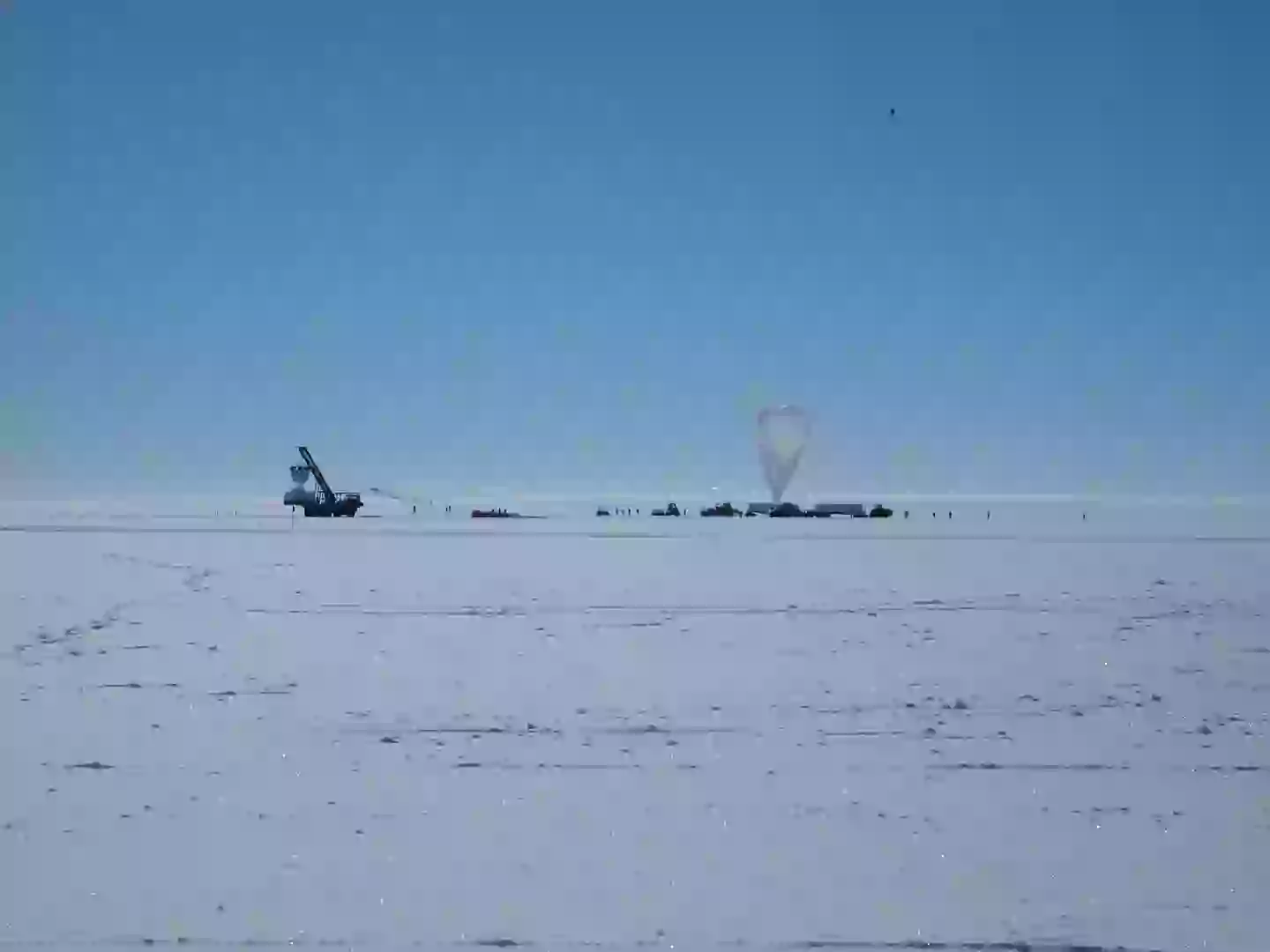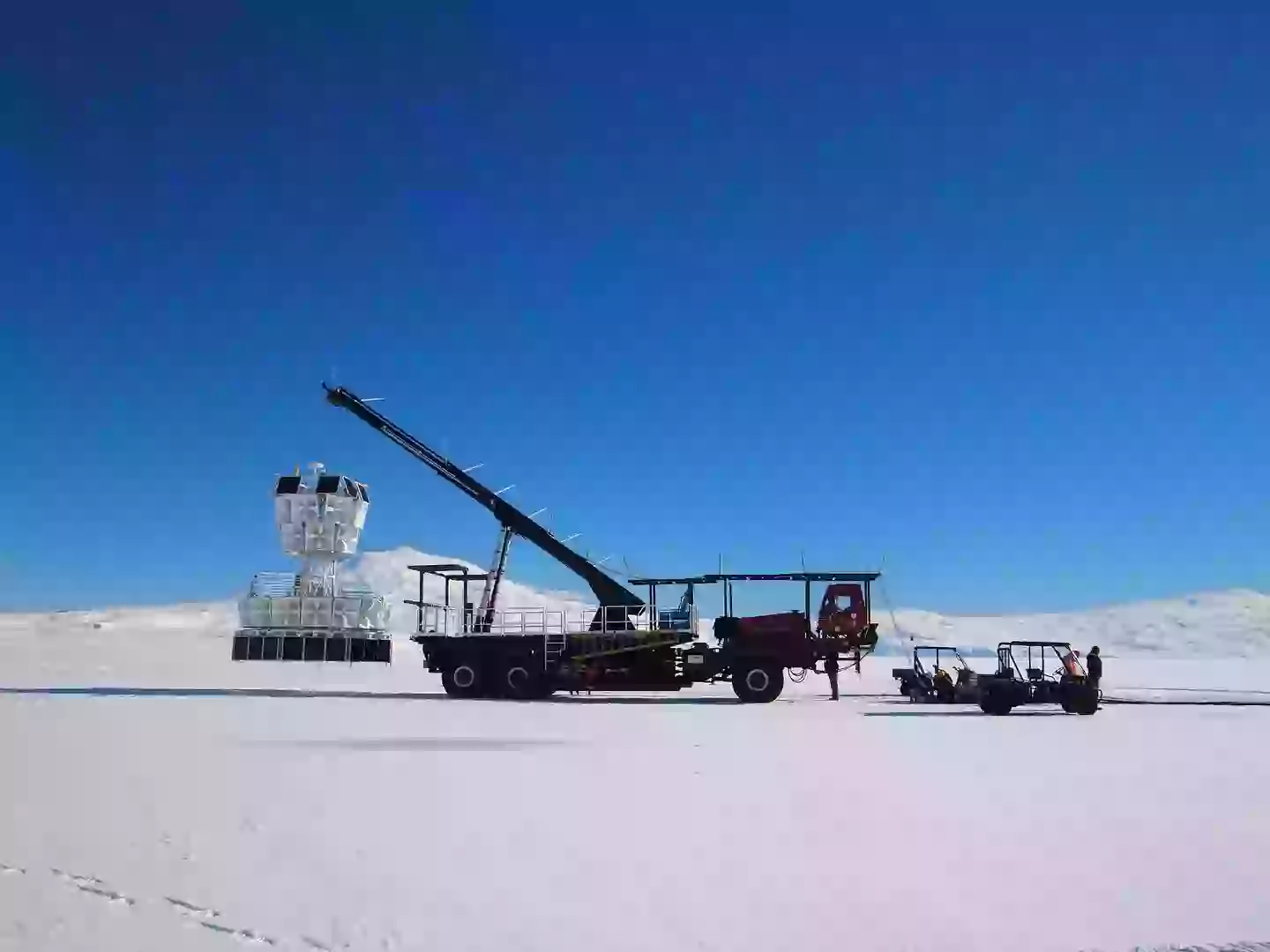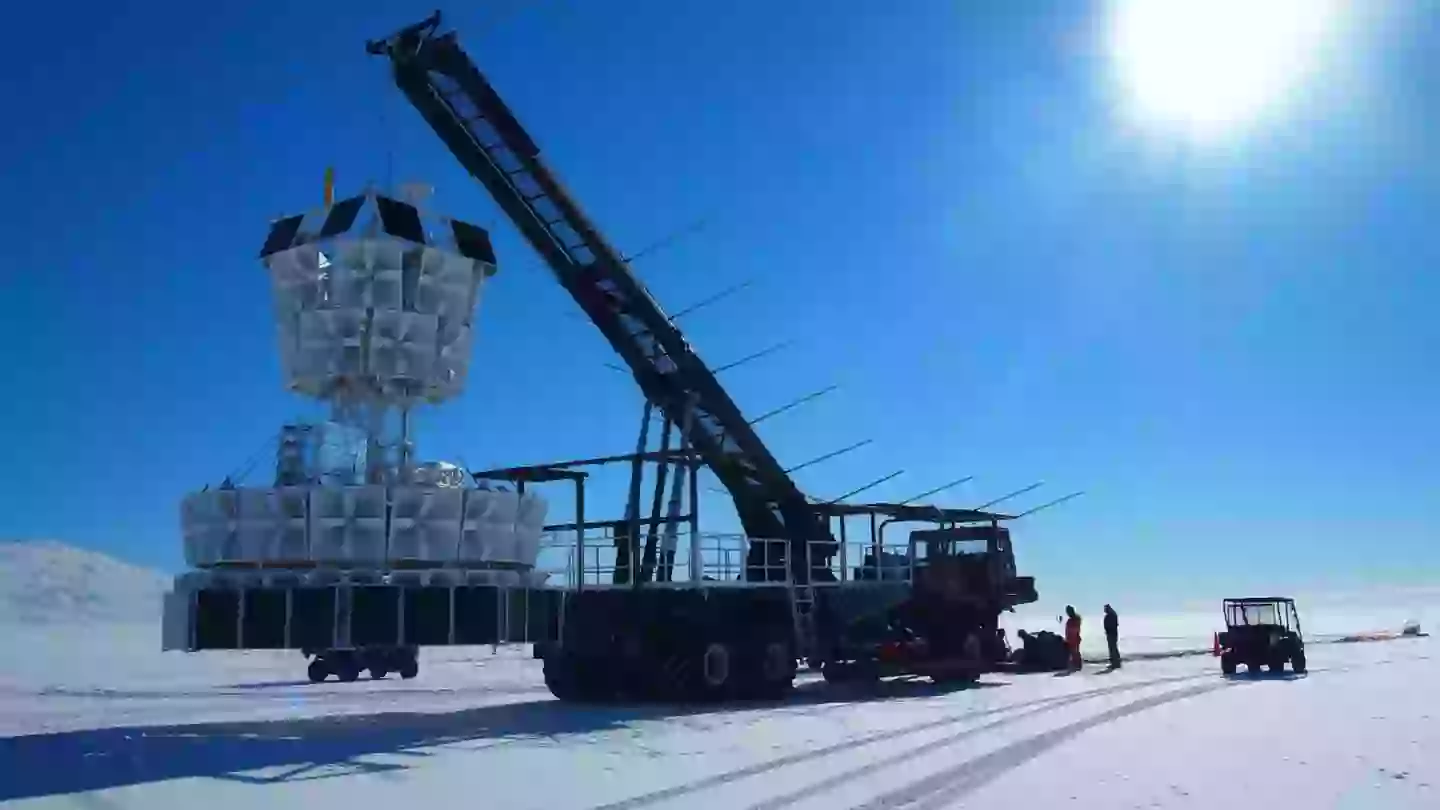Scientists have detected ‘bizarre’ radio waves beneath the Antarctic ice, challenging current particle physics theories.
This discovery was made by the Antarctic Impulsive Transient Antenna (ANITA)—a collection of instruments attached to balloons flying high over Antarctica, designed to capture radio waves from cosmic rays interacting with the atmosphere.
By deploying these instruments on a balloon that ascended 40km (29 miles) into the atmosphere, researchers aimed to gather detailed insights into cosmic activities throughout the universe.
However, the team made an unexpected discovery when they detected radio waves originating from the ice itself.
Antarctica was selected as the research site due to its relative isolation from other radio wave interferences.

Stephanie Wissel, one of the researchers, noted that the radio waves were discovered while searching for neutrinos.
“The radio waves that we detected were at really steep angles, like 30 degrees below the surface of the ice,” stated Wissel, an associate professor of physics, astronomy, and astrophysics at Penn State.
Neutrinos are crucial for comprehending the universe yet are notoriously difficult to detect. The observed radio waves should not have been detectable as they would typically pass through kilometers of rock and be absorbed.

Wissel mentioned that billions of neutrinos might be passing through a person at any moment, yet they rarely interact.
“So, this is the double-edged sword problem,” she explained. “If we detect them, it means they have traveled all this way without interacting with anything else. We could be detecting a neutrino coming from the edge of the observable universe.”
After launching the balloon above the ice, the team compared their data with previous experiments and found discrepancies.
This indicates that the detected signals were not neutrinos but rather something else.
Some hypotheses suggest the signals could be associated with dark matter, but this remains speculative and unverified.
In a statement about the findings, Wissel commented, “My guess is that some interesting radio propagation effects occur near ice and also near the horizon that I don’t fully understand, but we certainly explored several of those, and we haven’t been able to find any of those yet either.”
The research findings were published in the journal Physical Review Letters.

